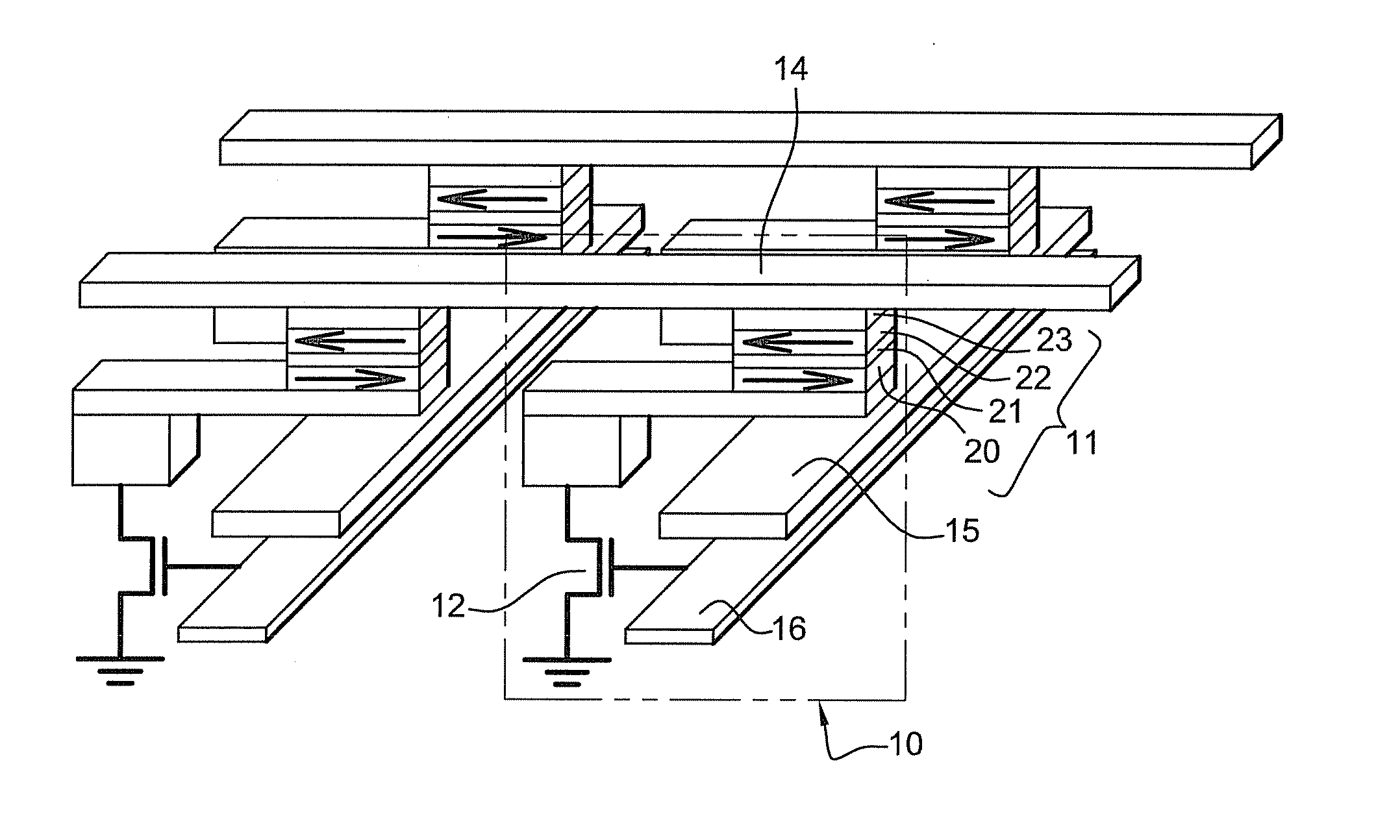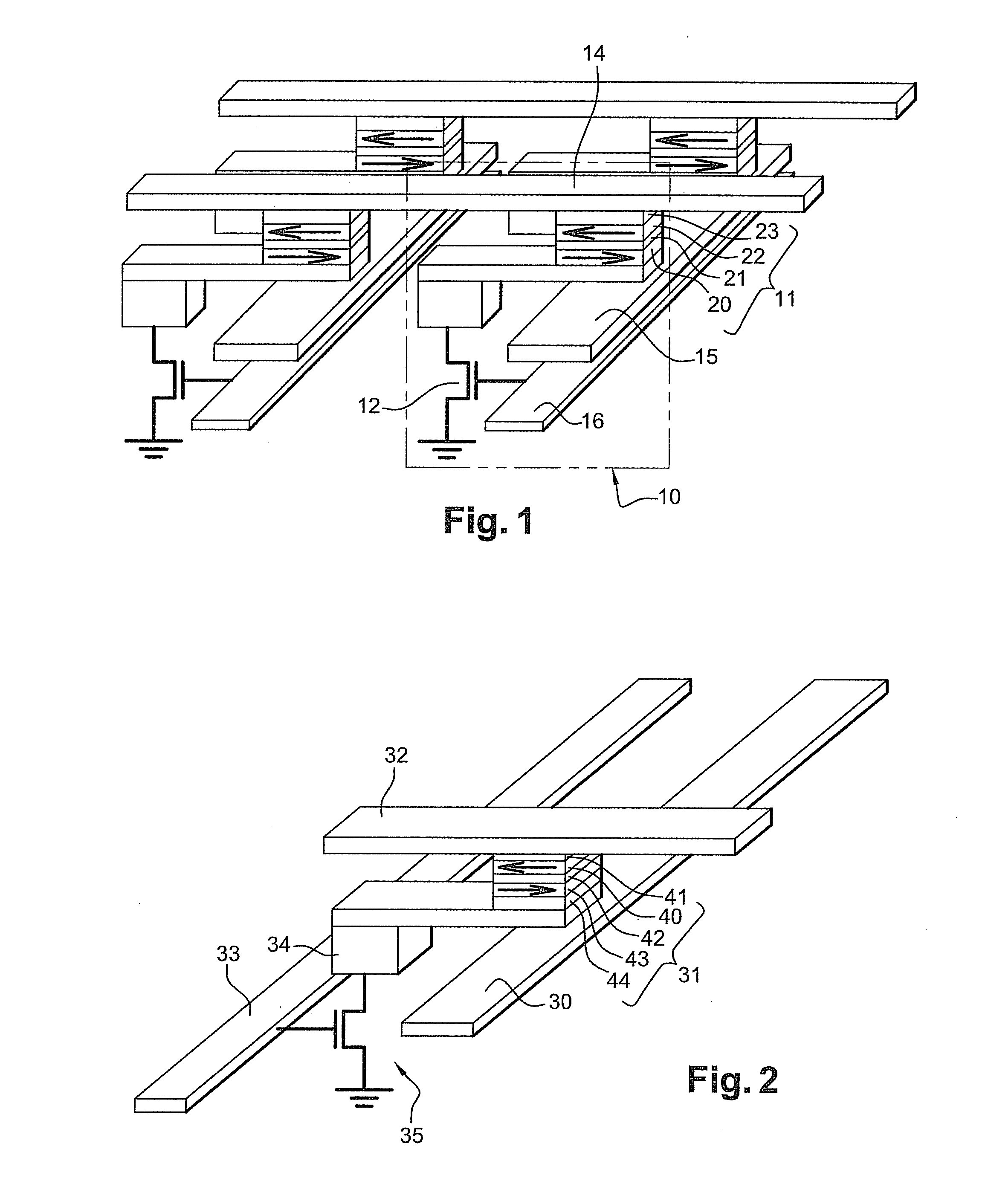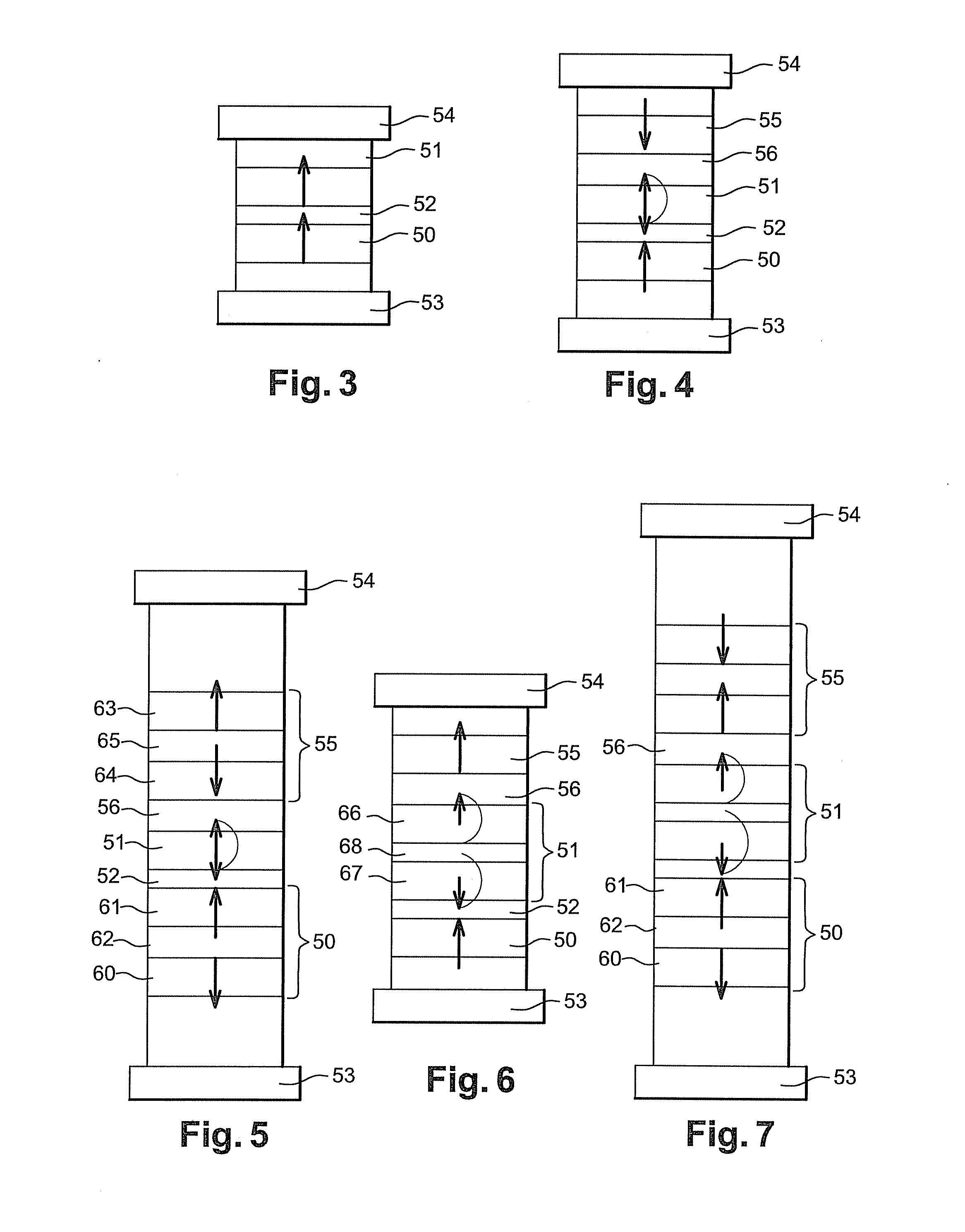Heat assisted magnetic write element
a write element and heat-assist technology, applied in the field of magnetic elements, can solve the problems of high power consumption of the memory making use of such an external magnetic field, risk of accidental switching, and stability of the magnetization of the free layer
- Summary
- Abstract
- Description
- Claims
- Application Information
AI Technical Summary
Benefits of technology
Problems solved by technology
Method used
Image
Examples
Embodiment Construction
[0099]The magnetic element at the core of the memory point or the logic element of the invention is a magnetoresistive element using the giant magnetoresistance or tunnel magnetoresistance effect. The core of this magnetoresistive element basically comprises a sandwich formed of two magnetic layers 50, 51 separated by a non magnetic spacer 52.
[0100]According to the invention, the two magnetic layers have a nonwrite anisotropy perpendicular to the plane of the layers.
[0101]The fixed magnetization layer or reference layer 50 has magnetic properties such that its magnetization remains perpendicular to the plane throughout the temperature range in which the magnetic element operates (in particular during writing and especially during reading and on standby). This operating temperature range may extend from as low as desired to typically +250° C. at the time of writing. There is no lower temperature limit for the operation of a fixed magnetization layer because the out-of-plane anisotrop...
PUM
 Login to View More
Login to View More Abstract
Description
Claims
Application Information
 Login to View More
Login to View More - R&D
- Intellectual Property
- Life Sciences
- Materials
- Tech Scout
- Unparalleled Data Quality
- Higher Quality Content
- 60% Fewer Hallucinations
Browse by: Latest US Patents, China's latest patents, Technical Efficacy Thesaurus, Application Domain, Technology Topic, Popular Technical Reports.
© 2025 PatSnap. All rights reserved.Legal|Privacy policy|Modern Slavery Act Transparency Statement|Sitemap|About US| Contact US: help@patsnap.com



